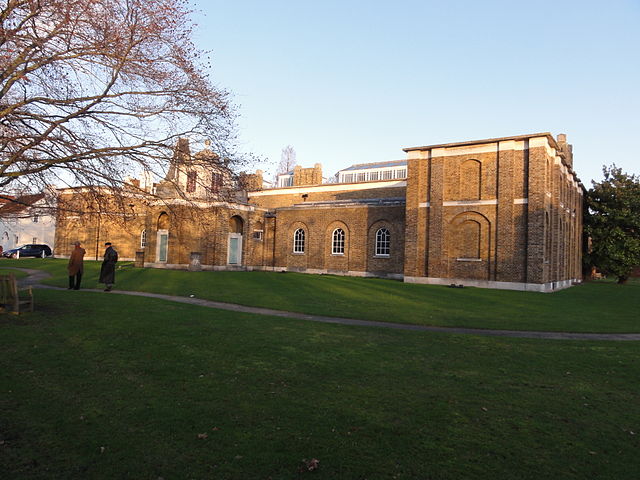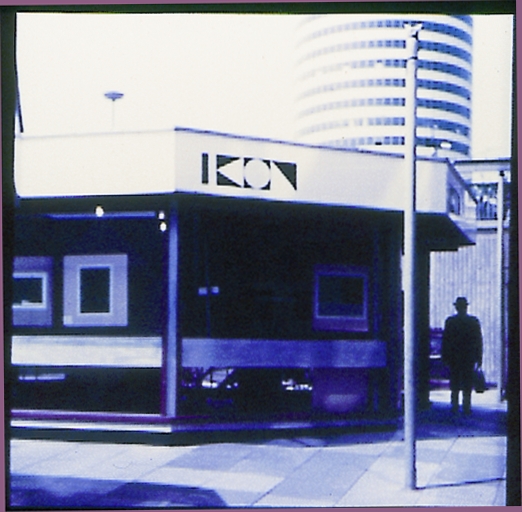Opening galleries has become rather fashionable for artists of late. Not long after the launch of Damien Hirst’s Newport Street Gallery in East London last October, the artist duo Gilbert & George announced their plans to open a non-profit foundation for contemporary art in Spitalfields. But this trend for artists opening museums is not a new one, as the founding stories behind these institutions reveal.
Dulwich Picture Gallery, London
Dulwich Picture Gallery. Photo: Wikimedia Commons

If it hadn’t been for the Swiss artist Sir Francis Bourgeois RA and the French dealer Noël Desenfans, who together ran a successful art dealership, England’s first purpose built public art gallery may never have existed. In 1790, Stanislaus Augustus, King of Poland commissioned the pair to form a royal collection from scratch, a task they carried out over the next five years. Yet during this time, Poland’s more powerful neighbours gradually partitioned the country and by 1795 Poland had disappeared as an independent state. The King was forced to abdicate, and his fledgling collection was left in the hands of his hired dealers.
Bourgeois and Desenfans hoped to find a public home for this collection. In 1799, Desenfans pressed the British Government to establish a national collection so that he could contribute works from his own. Parliament rejected this proposal, making it clear that Price Stanislaus’s collection would remain in the ownership of Bourgeois and Desenfans.
Noël Desenfans and Sir Francis Bourgeois (1805), Paul Sanby

When Desenfans died in 1807, Bourgeois became the sole owner of the collection. Following an accident, Bourgeois drew up his will, in which he bequeathed his collection to Dulwich College on the condition that the paintings should be available for the ‘inspection of the public’. He also stipulated that his friend, the architect Sir John Soane, should plan the necessary improvements to the gallery. The Dulwich Picture Gallery was therefore founded upon Bourgeois’s death in 1811, with the gallery opening to the public in 1817. Bourgeois, Desenfans and his wife Margaret are buried in the Gallery’s mausoleum.
Sir John Soane’s Museum, London
While Sir John Soane’s design for the Dulwich Picture Gallery has been credited as influencing the building of many other galleries, Soane’s greatest legacy must be his museum, now housed in the architect’s previous home. Soane originally bought number 12 in Lincoln’s Fields, London, in 1792, but as a fervent collector of antiquities, medieval objects, sculpture, paintings, drawings and architectural drawings and models, it soon became necessary for Soane to buy the house next door – number 13. In 1807 he bought its stable block, which he used for a new office and which he filled with plaster casts and Roman marbles, eventually taking over the entire property in 1812.
Portrait of Sir John Soane (1776), Christopher William Hunneman

Soane wanted his house and collection to be an educational tool for students. In 1833 he negotiated an Act of Parliament to ensure that his house and collection would be preserved after his death, keeping it exactly as he left it. Soane died four years later and a board of trustees assumed responsibility for fulfilling Soane’s wish: that his house should be kept open and free for inspiration and education.
Whitney Museum of American Art, New York
Gertrude Vanderbilt Whitney opened the Whitney Studio in Greenwich Village in 1914 to exhibit works by American artists overlooked by traditional galleries and academies. Her collection grew to over 500 works by 1929, which she offered to The Metropolitan Museum of Art. The museum refused her gift, however, so Whitney decided to start her own museum that would focus exclusively on art from America. In 1930 she founded the Whitney Museum of American Art, which opened in 1931.
Gertrude Vanderbilt Whitney (1916), Robert Henri

As the great-granddaughter of Cornelius Vanderbilt – one of the richest Americans in history – and the wife of the wealthy businessman and sportsman Harry Payne Whitney, Whitney was certainly able to indulge her interest in art by becoming a prominent patron. But Whitney was also a serious sculptor, who initially worked under a pseudonym, fearing that the work of a wealthy socialite would not be taken seriously. She studied under James Earle Fraser at the Art Students League of New York and in Paris where she received criticism from Rodin. Whitney began gaining attention as a sculptor in 1912 when she won the commission to design the Titanic Memorial (1914), which can still be seen in Washington D.C. Other notable works include the equestrian monuments to William F Cody (Buffalo Bill) (1924) and the memorial to Columbus (1929).
The Institute of Contemporary Art, London
Among the avant-garde writers, critics and patrons who founded the ICA in 1946 were two artists: Anthony Penrose and E.L.T Mesens. From the outset, the ICA aimed to exhibit works from a range of contemporary art forms. It purposefully avoided becoming a conventional modern art museum in London and instead supported the more radical tendencies in British art.
Penrose organised the first two exhibitions at the ICA. The first, ’40 Years of Modern Art’ (1948), included important Cubist works, while the second, ‘40,000 Years of Modern Art’, revealed his interest in African sculpture.
The Ikon Gallery, Birmingham
Ikon Gallery opened as a glass-walled kiosk in Birmingham’s Bullring Precinct in 1965

When the Scottish accountant and art collector Angus Skene bought David Prentice’s Kate and the Waterlilies in 1964, he later met with the artist to discuss the lack of support for contemporary artists from Birmingham’s art institutions. As a solution, the pair conceived of a ‘gallery without walls’, whose fluid artistic programme could tour to non-artistic venues, such as post offices and cinemas. Just one year later, the Ikon Gallery opened as a glass-walled kiosk in Birmingham’s Bullring Precinct, where it operated for three years. Following various moves around the city, the gallery is now situated in Brindleyplace.
Although Skene funded the project, he was adamant that the running of the gallery should be left to artists. The official founders were therefore four artists: Jesse Bruton, Robert Groves, Sylvani Merilion and Prentice. In 1964, they published a prospectus that summarised their aims:
‘Ikon is intended as an antithesis to exclusive art establishments and galleries…[it] has been formed because of the need for an accessible place where the exchange of visual ideas can become a familiar reality.’
In its early years, volunteers helped run the gallery, with the management being non-hierarchical and democratic. The gallery aimed to be adventurous in its programming, while also remaining accessible to the Birmingham public.


